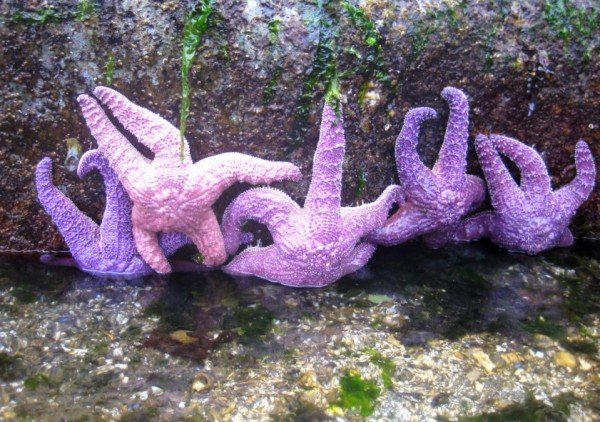By Ana Verayo, | May 09, 2016

Baby sea stars are making a comeback after a deadly virus almost wiped out populations.
Conservationists are hoping for a true rebound for starfish along the California coast, as starfish babies are now making a comeback, after a deadly virus almost wiped out starfish populations in the Pacific coast of North America, in the past two years. An estimated millions of starfish perished, however, scientists are now observing a baby boom.
Like Us on Facebook
Researchers from Oregon State University revealed in a new study that even if there are signs of a huge rebound, this echinoderm is still not free from looming environmental threats.
New findings reveal that the population number of juvenile starfish that are attached along the coast of California are unprecedented, describing them as "off the charts", where scientists found 300 times more than the usual number of juvenile of sea stars. Researchers say that this does not mean that young starfish are settling into higher ground but more sea stars are being born.
According to marine biology professor, Bruce Menge of Oregon State University, this also suggests an extraordinary survival rate that led to the juvenile stage.
Menge says that if they make it into adulthood without transmitting and suffering from the sea star wasting disease, in order to replenish the entire population, this still remains to be seen.
Sea star wasting syndrome was first detected off the coast of Oregon during April 2014. This fatal disease can can cause starfish to disintegrate, which means that their bodies literally melt.
The Pisaster ochraceus or the purple sea star populations were almost killed off, some 80 to 99 percent of the population, during 2014 and 2015. This epidemic also affected other sea star species that spans the region of the sea coast of Alaska down south to Baja, California.
To date, researchers are still trying to figure out the exact cause of this devastating disease, however, this latest study provided no link whatsoever about the virus and rising sea temperatures caused by global warming. This new study is published in the journal PLOS ONE.
-
Use of Coronavirus Pandemic Drones Raises Privacy Concerns: Drones Spread Fear, Local Officials Say

-
Coronavirus Hampers The Delivery Of Lockheed Martin F-35 Stealth Fighters For 2020

-
Instagram Speeds Up Plans to Add Account Memorialization Feature Due to COVID-19 Deaths

-
NASA: Perseverance Plans to Bring 'Mars Rock' to Earth in 2031

-
600 Dead And 3,000 In The Hospital as Iranians Believed Drinking High-Concentrations of Alcohol Can Cure The Coronavirus

-
600 Dead And 3,000 In The Hospital as Iranians Believed Drinking High-Concentrations of Alcohol Can Cure The Coronavirus

-
COVID-19: Doctors, Nurses Use Virtual Reality to Learn New Skills in Treating Coronavirus Patients







